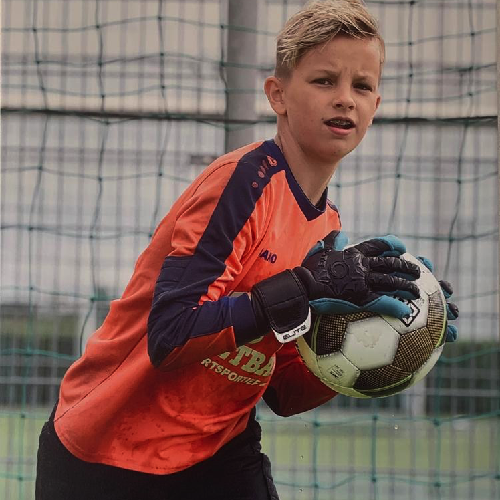
Puberty inhibitors aren’t dangerous, the wrong puberty is
“Isn’t that dangerous, those puberty inhibitors?” It’s a question I’ve been asked many times when I tell people that I started my physical transition at age 13. As logical as this step was for me, it seems surprising to the cisgender other. Since I was going to regret it, and isn’t hormone therapy harmful in the long-term? Anxiously the ignorant point to the “irreversibility” of puberty blockers. That I don’t want to go back, is a feeling they cannot seem to comprehend. To map out the vital meaning of puberty inhibitors, I spoke with three young transgender people.
“I just can’t understand,” says the 13-year-old Prinz. She is getting despondent of the infinite repetitive questions she has to answer: “my gender psychologist has been asking me if I feel like a girl since I was three, and I have been giving the same answer for ten years: ‘if I wouldn’t I wouldn’t be sitting here right?’” As covid measures dictate, I met Prinz via Zoom. Nostalgia crept up on me: her door filled with boyband posters, she herself wearing a headband that I could have been wearing 15 years ago. Her young appearance in a stark contrast to the political reality with which she has to deal: “what happens in England, feels so unnecessary to me.” She is referring to the decision of the court in the U.K. last January. Administering puberty blockers to transgender youth below the age of fifteen has been made legally impossible. “there is a solution for kids which gives them more time to think: puberty inhibitors. When I look at the people who started too late then I am relieved. I don’t want a lower voice and bigger hands because I am not a man.” Her eyes light up: “when I got my first anti-puberty shot, I was so happy I could scream.”
In the Netherlands, people who turn out to not be transgender, the so-called detransitioners, barely occur. A report by the government called “The Amsterdam Cohort of Gender Dysphoria Study” shows that between 1972 and 2015, only 0.6% of transgender women and 0.3% of transgender men turned out to regret their transition. Most of them did so due to a dreadful societal approach. Transgender people are seven times more likely to experience violence. People like Prinz, with an inherent conviction, appear more often than detransitioners, but that doesn’t stop the media from widely reporting the cases of detransition. In 2018, research TV show Zembla portrayed Patrick, who reversed his gender confirmation surgery: he wasn’t a woman after all. The show harvested a lot of outrage, especially with transgender people. The drift of the story was that transgender care was too easily accessible and not selective enough. Even though the reality is that many transgender people are waitlisted for years and have to go through endless diagnostics before they receive the care they are entitled to. We should be focusing on that.
Fifteen-year-old Fynn was administered hormone inhibitors when he was already half a year into puberty. “If I had started earlier I would have been able to go swimming this summer. All the other boys dive into the water with their bare chests while I.. well I can, but I would have to wear a binder.” Immediately after puberty kicked in, Fynn knew that this wasn’t him. However, it took a while before he could put his feelings into words. He too had to convince a gender psychologist that he could not unite with his birth-assigned gender. Now that puberty has left its marks, he is forced to wear a tight piece of elastic around his chest for the rest of his teenage years, just to keep up with his peers. No worry free summers, but shame.
Thirteen-year-old Timo also has to worry about breast growth. He tells me that he can’t shower with the other kids after soccer. When I ask him about his gender identity before the interview, he says shrugged: “simply, a boy.” His mother Josephine observes that the puberty inhibitors are of unprecedented importance to Timo: “We see a completely different child ever since he has started with the puberty inhibitors.” Despite the physical discomforts that are still there, Timo is flourishing and his joy of living has grown. Josephine does not see any danger in the medical intervention. “it can save so much suffering when transgender kids are allowed to start sooner.”
These stories take me back to when I was thirteen. The months before the first shot I was tossing and turning at night. The thought of the hospital rejecting my application was unbearable. How would I walk the streets when everyone could see that I was “actually a boy?” In my head, I was preparing for the giddy abuse: “he-she, tranny, shemale.” The whispering behind my ack when I would pass random strangers: “that is actually a man.” It so happens that I was estimated to grow as tall as two meters, three centimeters and six-and-a-half millimeters. I had been in that male puberty for a while when I read that most changes happen at night. From that moment on, I tied a wet towel around my tingling shoulders and I woke up every hour to push my developing Adam’s apple back into my throat. I still remember the tension at home: my desperate mother who couldn’t understand me and my stoic father who refused to address me as “she” and “my daughter” until I finally received the official declaration of my psychologist: “she’s a girl.”
When I ask the kids what they would like to give as advice to lawmakers, they unanimously say: “allow us to start sooner. Not those endless conversations with a psychologist, but a carefree youth.” People who fight for the earlier administering of puberty inhibitors are not transders, but normal people who want perfectly normal things. A boy who wants to put on his swim shorts without worry and swim with his friends. A girl who doesn’t want to spend half of her childhood in a hospital answering the same question over and over again. A mother who wants a happy life for her child. That is what is at stake here: a happy life for transgender kids. It’s that simple.
